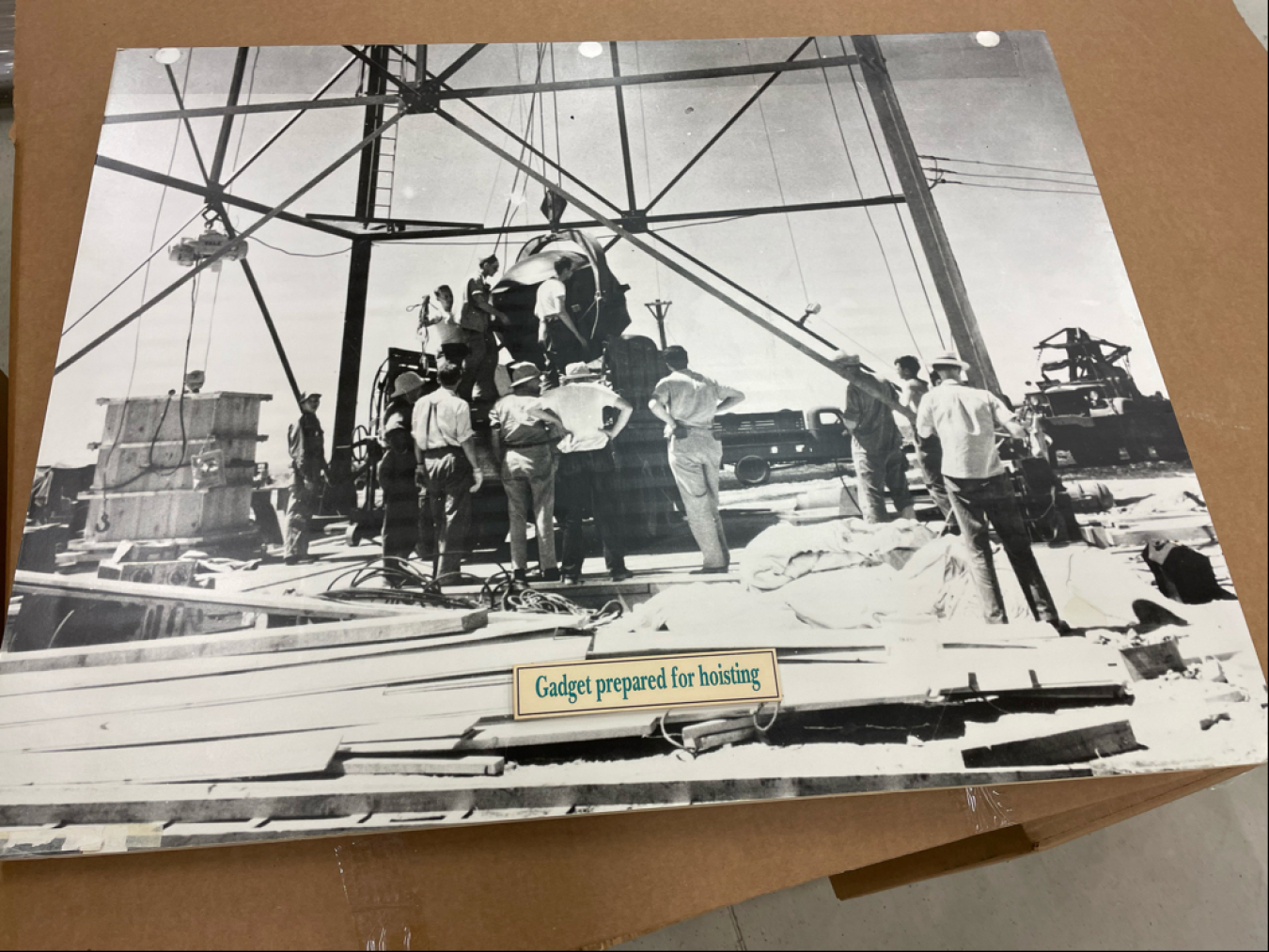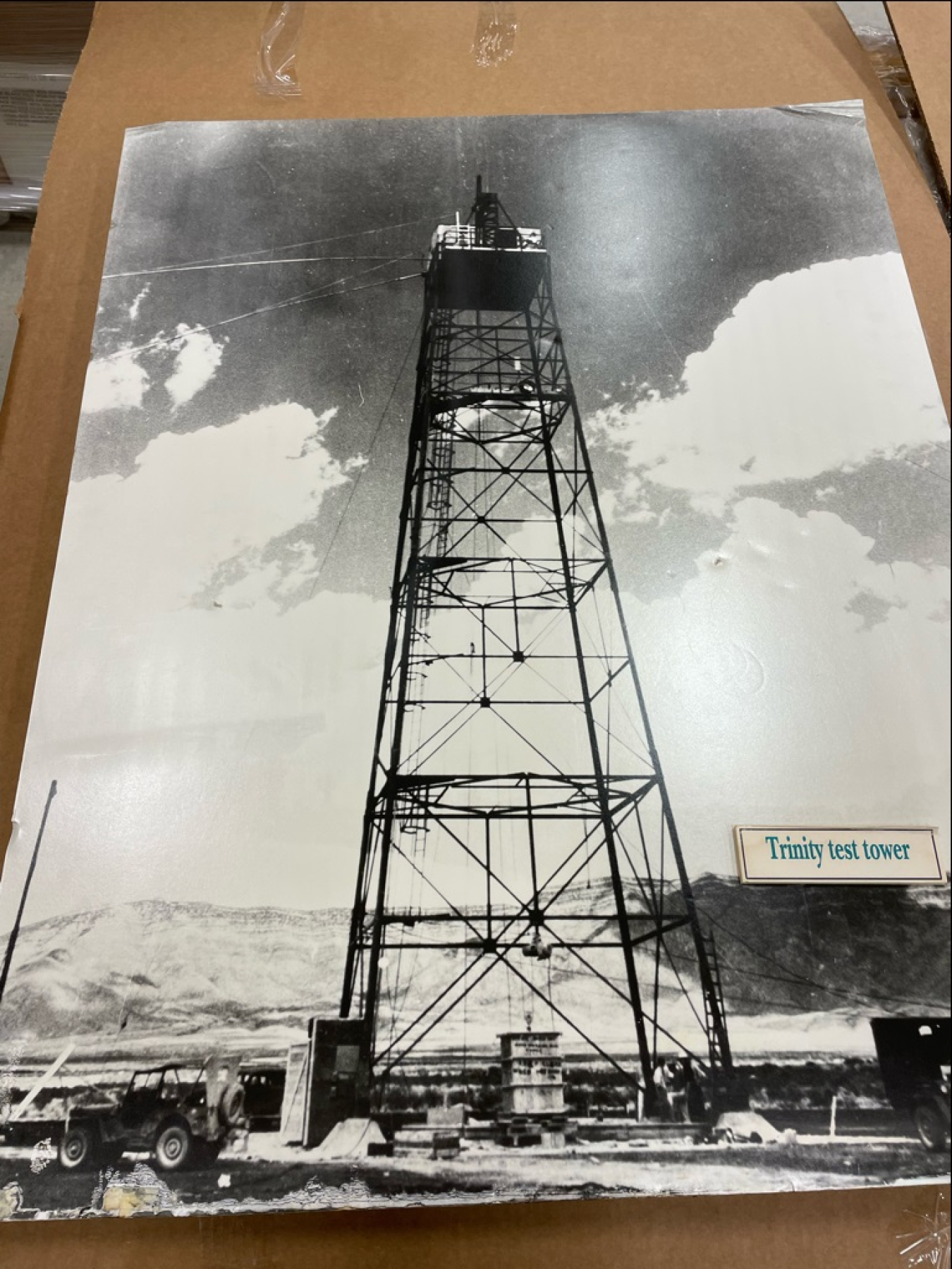Modern technology helps LM breathe life into history
August 18, 2023
For months, the U.S. Department of Energy, Office of Legacy Management Records, Information, and Knowledge Management group has been wading through several pallets of boxes at the Morgantown Records Storage facility in Morgantown, West Virginia.
Managing the LM records and information program, Giancarlo Deguia leads the mission to turn nearly century-old documents into easily accessible, retrievable, and defensible digital files. The project is enormous, and the team leverages both old-school tactics and modern technology to tackle the herculean effort.
"What LM, DOE, and the federal government have started doing more and more now is migrating toward the idea of records, information, and knowledge management born in, converted to, maintained, and dispositioned in a digital or electronic state,” Deguia said. “That’s opposed to the traditional information or records management physical practices and ‘hands-on’ disciplinary archaic traditions.”

“When you talk about knowledge management, it's really utilizing the technological tools and advances that we have at our disposal now to be able to link information together from different locations,” Deguia said. “This means institutional, recorded information is made even more valuable and effective when its interconnected with the undeniable tacit knowledge gained through experiential and operational situational awareness.”
The ongoing digitization process of legacy and historical archive records uses modern microfilm scanners that can scan an image and determine how, when, and where it was taken.
"This tool (optical character recognition) will also identify any other identifying features within the photo itself. So, it can link to other photos that might have that same type of image in the background for example,” Deguia said.
In a world where technology is changing at breakneck speed, this small team of archival and information experts is keeping pace.
That ability, according to Deguia, is in and of itself a game changer for LM’s work in fulfilling its mission and DOE’s promise to the nation in perpetuity.
"It’s being employed by our environmental and spatial data management teams because they are the primary groups who need the geolocations of pictures and locations, for example, that are taken at the particular sites to identify environmental monitoring needs or if there is a visual change in topographical or sub-surface characteristics,” Deguia said.
That work is underway at the Legacy Management Business Center in Morgantown, where the team adds documents, images, and historical milestones related to the Cold War Era to modernized records, and eventually artificial intelligence and machine learning. The most recent archives shipments are from a historian collection in Germantown, Maryland.
“This shipment is fascinating because the majority of the material that we received this time came from a secured area at the Germantown facility that’s co-located with other significantly important documents and information under 24-hour lock and key,” Deguia said.
Opening these time capsules has been captivating for the team. The Germantown material includes original paper memorandums blown up to the size of posters memorializing significant events and times during and after the Manhattan Project. One memorandum was a high-level DOE official recognizing the 50th anniversary of the first nuclear bomb test.

As the team began unpacking what they had, they saw a poster that was awe-inspiring.
"It was of a replica of an original photo of ground zero where they did the first atomic test, except this photo was the size of standard poster. In the picture, you'll see the contraption in the background that hoisted up and suspended the atomic bomb in place,” Deguia said. “In the foreground is a picture of J. Robert Oppenheimer and Gen. Groves.”

Lt. Gen. Leslie Groves was a U.S. Army Corps of Engineers officer and the director of the Manhattan Project. J. Robert Oppenheimer, an American theoretical physicist, was the director of the Los Alamos Laboratory during the Manhattan Project and is known as the "father of the atomic bomb."
The Manhattan Project story and all the milestones that followed are important chapters in United States history, said LM Director Carmelo Melendez.
“Many people are aware of our mission to preserve and protect records related to our stewardship; lesser known is the most important part of that mission: making them accessible to future generations,” Melendez said.

